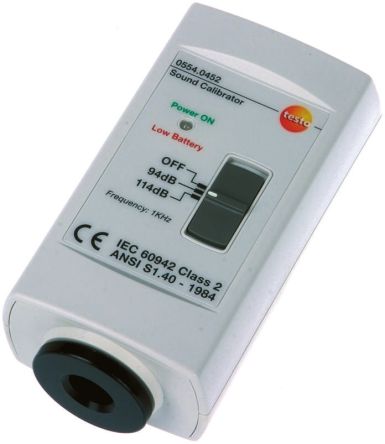
- #Clip on microphone level calibrator fuzzmeasure for mac#
- #Clip on microphone level calibrator fuzzmeasure 32 bit#
- #Clip on microphone level calibrator fuzzmeasure manual#
- #Clip on microphone level calibrator fuzzmeasure full#
- #Clip on microphone level calibrator fuzzmeasure mac#
When the test is redone correctly or the data presented better, both REW and FM seem all good to me.ĮDIT, chasing around the matrix of linked threads, I see level anomalies on the different graphs. We all see plenty of posts of flawed testing and presentation. So perhaps FM should be cut some slack or given some respect for being one of the few good acoustic applications for Mac. It might be worth noting that Apple and Java are not vbfs so it seems possible that REW might cease working on Macs again. So Glenn, I think we are safe to continue recommending FM. Using FM, as I do, driving the graph levels up, I am not finding issues, problems, or bugs.
#Clip on microphone level calibrator fuzzmeasure 32 bit#
I am quite familiar with the appearance of bit truncation and such from earlier 16 Bit times, but I haven't seen any of it since the major change to 32 Bit float. I would be quite happy to guide this process, there are settings options in Audio Mid Setup which could restrict the action to 16 Bit.
#Clip on microphone level calibrator fuzzmeasure full#
Let's use increasing sweep levels until the ETC gets within say 6dB of Full Scale, just in case level has something to do with it. I suggest the best way to figure out that 250mS would be to ask that OP to test again. Unless one particular to that app on that computer. If I may point out again, I use FM frequently and have never seen anything like the 250mS issue. If you see some particular issue you would like tested, I will be happy to help you out. Sorry Jens but I can't identify anything in particular that I could test in those links. If the audio interface has meters, none of this arises. I recommend driving the room fully, then adjusting the mic pre gain until the graphs show sensible levels. Perhaps the Clip/Over indicator remains absolute?

REW does meter dBFS but since the meter can be Calibrated I am unsure if it is absolute. The lack of an absolute level meter in FM makes level setting difficult. The 250mS issue is particular to this measurement here in this thread. In the meantime I suggest an innocent assumption.

I can't distill what particular issue or issues are being referred to within all those other linked threads, but will gladly try to explain and test any particular one if raised directly here. This diffusion over several threads and now a different forum is confusing to me. I would more than happy to do similar tests right here for you. I see the same Chris has offered to do tests specified by yourself to illuminate any suspected flaws. No doubt, as an early adopter and user of FM when there was no other option, I have always provided feedback to Chris on an ongoing basis. I would rather see dBFS than Magnitude, or misleading terms like SPL.ĭDChris is going to look at the issues regarding FM levels: This looks quite usual if not normal to me. In FM the Peak level on the Magnitude scale is -5dB while reading -15dB on the ETC. Incidentally, REW is a 16 Bit app, and when queried JohnPM has presented a cogent case as to why this resolution is totally acceptable for IR work. I would assume Record resolution is up to the interface.īit depth is selectable during IR Export.

#Clip on microphone level calibrator fuzzmeasure manual#
I can find no FFT setting in FM, and the Manual is freely available. I encourage purchase of his product and support of his ongoing activities.
#Clip on microphone level calibrator fuzzmeasure mac#
We may recall when REW didn't function on Mac at all, so FM was the only game in town. This in the face of very unbalanced competition, i.e.
#Clip on microphone level calibrator fuzzmeasure for mac#
Multichannel recording capability.įM works well with all interfaces, so it is the better tool for taking measurements for Mac users.ĮDIT, I am very appreciative of the great piece of work Chris has done in providing us with a wonderful tool. The other is the default Watefall settings, these are the two well known issues.Ĭonversely, FuzzMeasure, has welcome features not seen elsewhere. Making the Window as long as the graph range fixes the visual. Visual anomalies can occur at the decay tail.

This issue is particular to this measurement only.įM has two strange behaviours. I have not seen such a short and defined decay before. The Graphs should obviously read the same dBFS levels with other Y choices being secondary. I always recommend driving the room to ear protection level, and Four 10Second sweeps.Īgain I would welcome meters which show dBFS while monitoring input with the usual Over indicators. I rather see them a bit higher, but with FM's 32 Bit resolution and normalise, perhaps these old level analogue or 16 Bit level setting habits should probably be relegated to history. Hamming, Half- Hamming, etc.) is taken into account for this calculation. The Magnitude Response graph displays the result of a Fourier transform contained within the analysis window for the selected impulse response(s).


 0 kommentar(er)
0 kommentar(er)
